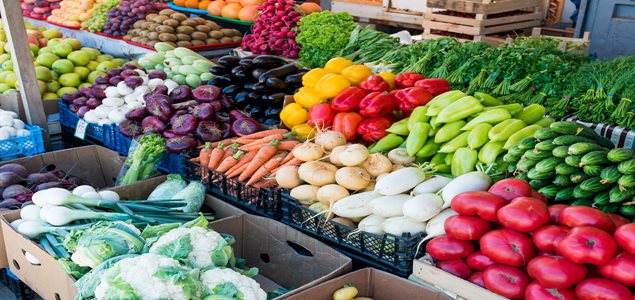– Dr. James Hébert
As day length shortens and nights become longer and cooler, yields from home gardens increase and nature’s bounty is experienced in many other places around us including farmers’ markets, roadside stands, food cooperatives, and grocery stores that stock local produce.
Anyone who has ever gardened, or even experienced home-grown foods knows that the taste of these home-grown and locally available vegetables and fruits is almost qualitatively different than the typical fare found in supermarkets (especially in the off-season). It is no accident that those foods that are the most colorful and flavorful also tend to be the most strongly anti-inflammatory. Those pigments that impart color are micronutrients that also control many biological processes. We know that many of them are strongly associated with decreased risk of cancer, heart disease, and type II diabetes mellitus. Likewise, we note that those compounds that are strongly aromatic also are associated with decreased risk of these chronic diseases. Not only that, they also reduce the aches and pains associated with daily life. So, besides the wonderful colors and superb aroma, it is a great comfort to know that virtually anything that we grow in our home garden is anti-inflammatory!
In developing the Dietary Inflammatory Index (DII®) we began to notice that those foods that are the most anti-inflammatory tend to be colorful, flavorful and aromatic. For those of us who love food, the first thing that we perceive about what we are going to consider putting in our mouth is the aroma. I vividly recall, from many decades ago, going into the market in South India or Uganda. I could smell the spices and the fragrance of crops such as cilantro, lemon grass, guava and basil long before I could actually see the produce. This was a very comforting feeling; one that is reminiscent of working in the garden as a young child or, as a much older adult, gardening at my home in Columbia, South Carolina. Why do I remember these sensations so vividly? And why do fragrances and odors leave such a strong impression? The simple answer is that the chemical senses of taste, flavor, and smell are not processed in the same way as other senses. Actually, our brain dangles neurons down into our nasal passages to collect this information! So, there’s very little neurological “gating” that occurs. This is primitive stuff that tickles a very sensitive part of our nervous system and gets to us in a deeply emotional way.
Now, I could regale you with all of the scientific evidence associating eating a diet that is rich in vegetables and fruits, and therefore has a low DII® score. However, I think it’s best to just say the literature consists of many tens of thousands of peer-reviewed scientific articles. There is no doubt that eating a diet rich in vegetables and fruits is a good strategy to prevent future disaster. In the here and now, they are almost guaranteed to make you feel better. Really, the more vegetables and fruits that you eat and the more varied these are in your diet, the better. While you are eating these healthy foods, you are displacing unhealthy pro-inflammatory foods, which tend to be white or colorless, lack flavor and aroma, and have few nutrients but lots of calories per unit weight or volume.

